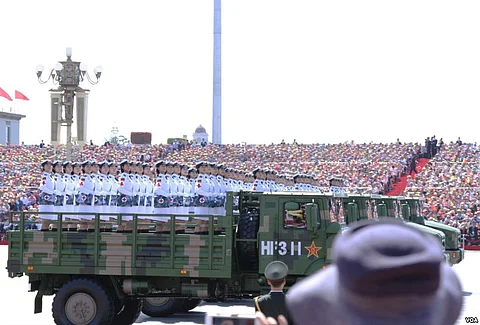

China has significantly improved its capability to conduct military operations in Taiwan and transition rapidly from peacetime to wartime operations, according to Taiwanese officials.
A report published by the Financial Times cited Taiwan’s Ministry of Defense, noting that China’s People’s Liberation Army (PLA) now conducts continuous amphibious training and has upgraded its air force and rocket artillery systems, giving it the ability to strike targets across Taiwan.
The report further noted a new and increasingly unstable equilibrium in the Taiwan Strait. Taiwanese officials said that Chinese military aircraft now enter Taiwan’s de facto airspace—the Air Defense Identification Zone (ADIZ)—an average of 245 times per month. This figure has sharply risen from fewer than 10 monthly incursions five years ago. Notably, there were 153 reported incursions in a single day in October last year.
Chinese naval vessels have also been crossing the “median line” in the strait—considered an unofficial maritime boundary separating mainland China and Taiwan—approximately 120 times per month, an increase that signals growing Chinese assertiveness.
This sharp rise in military activity coincides with growing tensions between China, Taiwan, and the United States. Many analysts attribute this escalation to what Beijing sees as Washington’s abandonment of its long-standing One China Policy. That policy, established in 1972 as a condition for diplomatic ties between the U.S. and the People’s Republic of China, acknowledges Beijing as the sole legitimate government of China and views Taiwan as part of China.
Since 2022, however, the U.S. has taken steps that Beijing views as undermining the One China Policy. On August 2, 2022, then-Speaker of the House Nancy Pelosi visited Taiwan, drawing strong condemnation from Beijing. In response, China has carried out increasingly aggressive military exercises around the island, including blockade simulations.
In April of last year, the U.S. included $8 billion in military aid for Taiwan as part of a broader appropriations package for Ukraine and Israel. Around the same time, it was confirmed that U.S. special forces had been deployed to Taiwan-controlled Kinmen Islands, which are located just 3 miles (5 kilometers) from the Chinese mainland.
The Trump administration has also made clear that refocusing U.S. military resources toward the Indo-Pacific region to confront China is now a top priority.